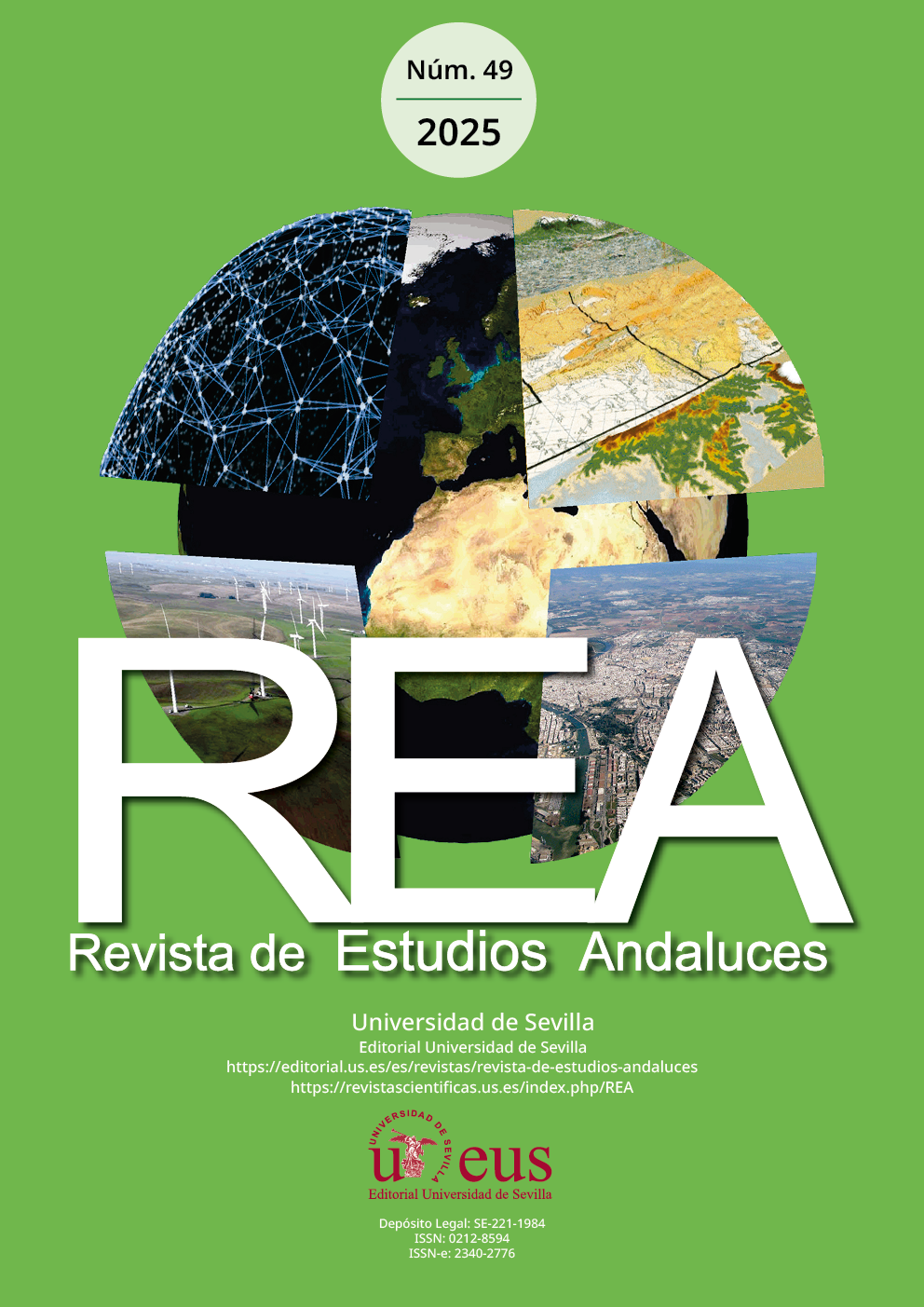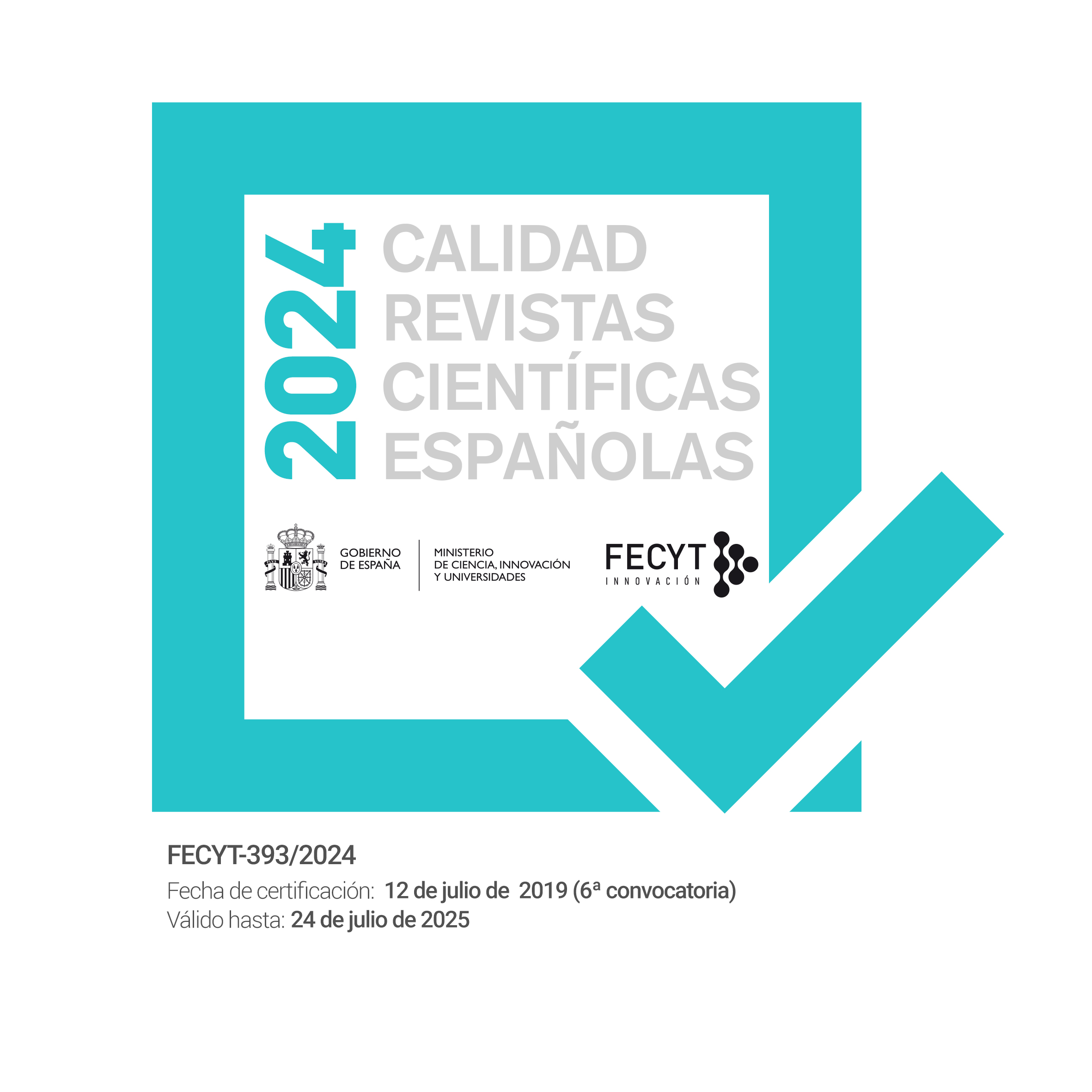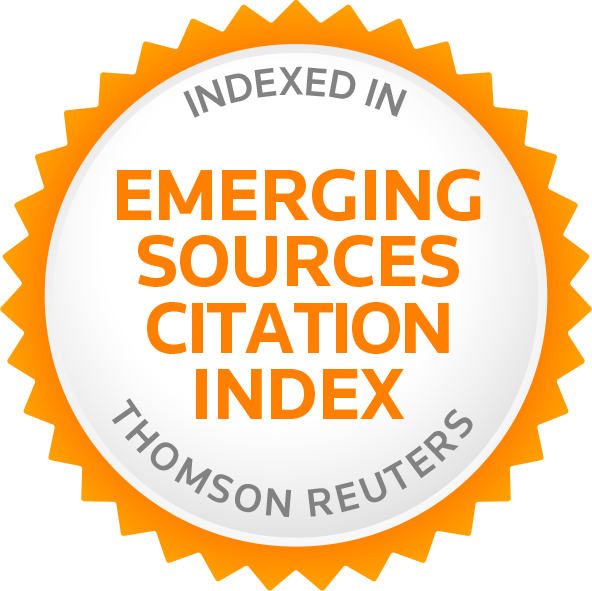Integrated GIS and remote sensing tools approach for the management of peripheral areas in Maghreb cities from 1988-2005. Case study: Greater Agadir (Morocco) and the city of Algiers (Algeria)
DOI:
https://doi.org/10.12795/rea.2025.i49.11Palabras clave:
Crecimiento urbano, Periurbanización, Tierras agrícolas, Imágenes satelitales, Cuadrícula, clasificación supervisada, Uso del sueloResumen
Este trabajo tiene como objetivo caracterizar el estado del uso del suelo y su evolución espacio-temporal de dos áreas representativas: el Gran Agadir (Marruecos) y la periferia oriental de Argel (Argelia). Para cumplir con este objetivo, aplicamos el método de clasificaciones supervisadas y cuadrícula en una serie de imágenes satelitales, ‘Landsat-TM y ETM’ de 1988-2005, fotos aéreas y ortofotos. Este procesamiento está respaldado por encuestas y datos de campo. A continuación, elaboramos mapas para obtener datos cuantitativos sobre la evolución espacio-temporal de la cobertura del suelo y la evaluación del consumo de tierras agrícolas. Se concluye que las áreas de estudio experimentaron un desarrollo de la urbanización mal gestionada, que ha invadido la mitad del área agrícola durante el período 1987-2005, con la pérdida de más de 12.000 ha a un ritmo de 700 ha/año.
Descargas
Citas
Abdellaoui, A. (2007). Intégration de l’imagerie satellitale multi-résolution et de données terrain pour la réhabilitation des quartiers anciens en milieu oasien. Cas de la ville de Laghouat (Algérie). COLEGIUL REDACŢIE 1.
Abdellaoui, A., Benblidia, N.G., Patru, I., Ielenicz, M., & Ozer, A. (2006). Technique de clonage de pixels pour l’analyse d’objets de faible surface à l’aide d’une image satellitaire à moyenne résolution spatiale : application aux glissements de terrain de la vallée de la Prahova (Roumanie). Télédétection Rev. Rech. Appl. en Télédétection 6.
Abdellaoui, A., & Benkouider, F. (2009). L’imagerie satellitale multi résolution: Un outil complémentaire pour la réalisation d’un SIG-Routes. Presented at the Colloque International sur les applications de la télédétection et SIG aux Géosciences, Constantine, Ageria.
Abdellaoui, A., & Rougab, A. (1997). Caractérisation de la réponse du bâti: application au complexe urbain de Blida (Algérie). Univ. Francoph. Actual. Sci., 75–83.
Abou Rayan, M.M., & Djebedjian, B. (2016). Urban Water Management Challenges in Developing Countries: The Middle East and North Africa (MENA). In Sustainable Water Management in Urban Environments (pp. 295–326). Springer. https://doi.org/10.1007/978-3-319-29337-0_10
Agnaou, M., El Mourabit, Y., Nadir, M., Oualid, J.A., ELmchichi, K., Sahla, K., Lefrere, L., Banaoui, A., & Alla, A.A. (2023). Integrated Biomarker responses in the mollusk, Patella vulgata: Assessing Aquatic pollution in Agadir Bay, South Morocco. Mar. Pollut. Bull., 196, 115660. https://doi.org/10.1016/j.marpolbul.2023.115660
Antoni, J.-P. (2003). Modélisation de la dynamique de l’étalement urbain Aspects conceptuels et gestionnaires Application à Belfort. [Thèses Dr. Univ. Louis Pasteur].
Antony, J. (2003). A systematic methodology for Design of Experiments, in: Design of Experiments for Engineers and Scientists. Butterworth-Heinemann, Oxford (pp. 29–43). https://doi.org/10.1016/B978-075064709-0/50005-3
Arimah, B. (2017). Infrastructure as a Catalyst for the Prosperity of African Cities. Procedia Eng., Urban Transitions Conference, Shanghai, September 2016, 198, (pp. 245–266). https://doi.org/10.1016/j.proeng.2017.07.159
Aroua, N. (2022). Long term city development versus water strategy in al-Maghreb. LARHYSS J. P-ISSN 1112-3680 E-ISSN 2521-9782 173–197.
Atik, M., & Abdellaoui, A. (2013). Urban dynamic analysis using satellite images and multisource data. Case of Grand Agadir-Morocco-between 1988 and 2005. Ann. Univ. Buchar. Geogr. Series Analale Univ. Bucuresti Ser. Geogr.
Basu, T., Das, A., & Pereira, P. (2023). Exploring the drivers of urban expansion in a medium-class urban agglomeration in India using the remote sensing techniques and geographically weighted models. Geogr. Sustain, (4), 150–160. https://doi.org/10.1016/j.geosus.2023.03.002
Belal, A.A., & Moghanm, F.S. (2011). Detecting urban growth using remote sensing and GIS techniques in Al Gharbiya governorate, Egypt. Egypt. J. Remote Sens. Space Sci., (14), 73–79. https://doi.org/10.1016/j.ejrs.2011.09.001
Belal, B., Atik, M., Abdellaoui, A., & Morsli, M. (2013). Etude de L’étalement Urbain et La Consommation D’espace Agricole À La Périphérie Est d’Alger par Utilisation des Images Satellitaires. Bull. Société Géographie Egypte, (86), 19.
Bellout, A., Vaz, E., & Penfound, E. (2020). Rethinking agricultural land use in Algiers: A spatial analysis of the Eastern Mitidja Plain. Habitat Int. 104, 102239. https://doi.org/10.1016/j.habitatint.2020.102239
Bertini, R., & Zouache, A. (2021). Agricultural Land Issues in the Middle East and North Africa. Am. J. Econ. Sociol., (80), 549–583. https://doi.org/10.1111/ajes.12391
Bhaskaran, S., Paramananda, S., & Ramnarayan, M. (2010). Per-pixel and object-oriented classification methods for mapping urban features using Ikonos satellite data. Appl. Geogr., Climate Change and Applied Geography – Place, Policy, and Practice, 30, 650–665. https://doi.org/10.1016/j.apgeog.2010.01.009
Biraud-Burot, I. (2005). Étudier la ville à travers le prisme de la végétation : nouvelles pratiques, nouveaux apports de la télédétection : Montréal et Paris, terrains d’expérimentation. (These de doctorat, Paris 4).
Bongwa, A.N., & Dijk, M.P. van (2021). Chapter 9: Financing urban infrastructure and services in Africa.
Cabral, P. (2007). Délimitation d‘aires urbaines à partir d‘une image Landsat ETM+ : comparaison de méthodes de classification. Can. J. Remote Sens., (33), 422–430. https://doi.org/10.5589/m07-039
Chapman, S., Watson, J.E.M., Salazar, A., Thatcher, M., & McAlpine, C.A. (2017). The impact of urbanization and climate change on urban temperatures: a systematic review. Landsc. Ecol., (32), 1921–1935. https://doi.org/10.1007/s10980-017-0561-4
Civco, D., & Hurd, J. (1997). Impervious Surface Mapping for the State of Connecticut. Proc. ASPRS Annu. Conf.
Das, S., & Angadi, D.P. (2022). Land use land cover change detection and monitoring of urban growth using remote sensing and GIS techniques: a micro-level study. GeoJournal, (87), 2101–2123. https://doi.org/10.1007/s10708-020-10359-1
Devkota, M., Singh, Y., Yigezu, Y.A., Bashour, I., Mussadek, R., & Mrabet, R. (2022). Chapter Five–Conservation Agriculture in the drylands of the Middle East and North Africa (MENA) region: Past trend, current opportunities, challenges and future outlook. In D.L. Sparks (Ed.), Advances in Agronomy. Academic Press (pp. 253–305). https://doi.org/10.1016/bs.agron.2021.11.001
Dhanaraj, K., & Angadi, D.P. (2022). Land use land cover mapping and monitoring urban growth using remote sensing and GIS techniques in Mangaluru, India. GeoJournal, (87), 1133–1159. https://doi.org/10.1007/s10708-020-10302-4
Elangovan, K., & Krishnaraaju, G. (2023). Mapping and Prediction of Urban Growth using Remote Sensing, Geographic Information System, and Statistical Techniques for Tiruppur Region, Tamil Nadu, India. J. Indian Soc. Remote Sens., (51), 1657–1671. https://doi.org/10.1007/s12524-023-01725-w
El-bouayady, R., & Radoine, H. (2023). Urbanization and Sustainable Urban Infrastructure Development in Africa. Environ. Ecol. Res. (11), 385–391. https://doi.org/10.13189/eer.2023.110212
Forget, Y., Linard, C., & Gilbert, M. (2018). Supervised Classification of Built-Up Areas in Sub-Saharan African Cities Using Landsat Imagery and OpenStreetMap. Remote Sens. 10, 1145. https://doi.org/10.3390/rs10071145
Frimpong, B.F., Koranteng, A., Opoku, F.S., 2023. Analysis of urban expansion and its impact on temperature utilising remote sensing and GIS techniques in the Accra Metropolis in Ghana (1986–2022). SN Appl. Sci. 5, 1–25. https://doi.org/10.1007/s42452-023-05439-z
Fürst, C., Luque, S., & Geneletti, D. (2017). Nexus thinking – how ecosystem services can contribute to enhancing the cross-scale and cross-sectoral coherence between land use, spatial planning and policy-making. Int. J. Biodivers. Sci. Ecosyst. Serv. Manag., 13, 412–421. https://doi.org/10.1080/21513732.2017.1396257
Gadal, S. (2004). Méthodes RSI pour l’identification des formes du bâti. Rev. Fr. Photogrammétrie Télédétection.
Gluch, R. (2002). Urban growth detection using texture analysis on merged Landsat TM and SPOT-P data. Photogramm. Eng. Remote Sens., (68), 1283–1288.
Gomiero, T. (2016). Soil Degradation, Land Scarcity and Food Security: Reviewing a Complex Challenge. Sustainability, (8), 281. https://doi.org/10.3390/su8030281
Gong, P., &Howarth, P.J. (1990). The use of structural information for improving land-cover classification accuracies at the rural-urban fringe.
Haber, W. (2007). Energy, food, and land — The ecological traps of humankind. Environ. Sci. Pollut. Res.–Int., (14), 359–365. https://doi.org/10.1065/espr2007.09.449
Hachemi, K., Abdellaoui, A., Grecu, F., Ozer, A., & Visan, M. (2010). Association d’images diachroniques avec un MNA pour une meilleure interprétation des changements de paysage dans la région de Buzau (Roumanie). Rev. Geomorfol., (12), 53–65.
Hadjri, K., & Osmani, M. (2004). The spatial development and urban transformation of colonial and postcolonial Algiers. Plan. Middle East. Cities Urban Kaleidosc. (pp. 29–55).
Harris, P.M., & Ventura, S.J. (1995). The integration of geographic data with remotely sensed imagery to improve classification in an urban area. Photogramm. Eng. Remote Sens., (61), 993–998.
Hegazy, I.R., & Kaloop, M.R. (2015). Monitoring urban growth and land use change detection with GIS and remote sensing techniques in Daqahlia governorate Egypt. Int. J. Sustain. Built Environ. ,(4), 117–124. https://doi.org/10.1016/j.ijsbe.2015.02.005
Hersperger, A.M., Oliveira, E., Pagliarin, S., Palka, G., Verburg, P., Bolliger, J., & Grădinaru, S. (2018). Urban land-use change: The role of strategic spatial planning. Glob. Environ. Change, (51), 32–42. https://doi.org/10.1016/j.gloenvcha.2018.05.001
Hornsby, K.S., & Yuan, M. (2008). Understanding Dynamics of Geographic Domains. 1st ed. CRC Press, Inc., USA.
Huzui, A.E., Mirea, D.A., & Stoiculescu, R.C. (2011). The Perception upon Landscape Revitalization of Industrial Spaces. Case Study – The Industrial Units Belvedere Cigarette Factory and S.C. Mefin Sinaia. Romanian Rev. Reg. Stud. VII, 67–78.
Jat, M.K., Garg, P.K., & Khare, D. (2008). Monitoring and modelling of urban sprawl using remote sensing and GIS techniques. Int. J. Appl. Earth Obs. Geoinformation, (10), 26–43. https://doi.org/10.1016/j.jag.2007.04.002
Jensen, J.R. (1996). Introductory digital image processing: a remote sensing perspective. Prentice-Hall Inc.
Koko, A.F., Yue, W., Abubakar, G.A., Hamed, R., & Alabsi, A.A.N. (2021). Analyzing urban growth and land cover change scenario in Lagos, Nigeria using multi-temporal remote sensing data and GIS to mitigate flooding. Geomat. Nat. Hazards Risk.
Koomen, E., Rietveld, P., & de Nijs, T. (2008). Modelling land-use change for spatial planning support. Ann. Reg. Sci., (42), 1–10. https://doi.org/10.1007/s00168-007-0155-1
Kosyakov, S.V., & Sadykov, A.M. (2015). GIS-based cost distribution analysis of new consumer connections to an urban power grid. Geo-Spat. Inf. Sci., (18), 183–192. https://doi.org/10.1080/10095020.2015.1128696
Kouaouci, A., & Rabah, S. (2013). La reconstruction des dynamiques démographiques locales en Algérie (1987-2008) par des techniques d’estimation indirecte. Cah. Qué. Démographie, (42), 101–132. https://doi.org/10.7202/1017099ar
Lajoie, G. (1992). Le carroyage des informations urbaines: une nouvelle forme de banque de données sur l’environnement du Grand Rouen. Presses universitaires de Rouen et du Havre.
Li, Xin, Li, Xiaoshun, & Ma, X. (2022). Spatial optimization for urban green space (UGS) planning support using a heuristic approach. Appl. Geogr., 138, 102622. https://doi.org/10.1016/j.apgeog.2021.102622
Ligtenberg, A., Bregt, A.K., & van Lammeren, R. (2001). Multi-actor-based land use modelling: spatial planning using agents. Landsc. Urban Plan., (56), 21–33. https://doi.org/10.1016/S0169-2046(01)00162-1
Liu, Z., Gao, W., Wang, Q., Zhang, G., & Yu, L. (2009). A Remote Sensing Image Process Method of Supervised Classification under Grid Environment. In 2009 International Workshop on Intelligent Systems and Applications. Presented at the 2009 International Workshop on Intelligent Systems and Applications, (pp. 1–4). https://doi.org/10.1109/IWISA.2009.5072669
Lu, D. & Weng, Q. (2004). Spectral Mixture Analysis of the Urban Landscape in Indianapolis with Landsat ETM+Imagery. Photogrammetric Engineering & Remote Sensing, (9), 1053-1062. https://doi.org/10.14358/PERS.70.9.1053
Luo, X., Tong, Z., Liu, Y., Xiong, Q., Wu, Z., & Chen, H. (2023). Revealing the formation mechanism of rural housing hollowing via considering the nonlinear effects of spatial factors and planning variables. Appl. Geogr., 155, 102957. https://doi.org/10.1016/j.apgeog.2023.102957
Lynch, P., Blesius, L., & Hines, E. (2020). Classification of Urban Area Using Multispectral Indices for Urban Planning. Remote Sens., 12, 2503. https://doi.org/10.3390/rs12152503
Madbouly, M. (2009). Revisiting urban planning in the Middle East North Africa region. Reg. Study Prep. UN-Habitat Glob. Rep. Hum. Settl.
Maksudyan, N. (2018). Urban planning in North Africa. Plan. Perspect.
Manesha, E.P.P., Jayasinghe, A., & Kalpana, H.N. (2021). Measuring urban sprawl of small and medium towns using GIS and remote sensing techniques: A case study of Sri Lanka. Egypt. J. Remote Sens. Space Sci., (24), 1051–1060. https://doi.org/10.1016/j.ejrs.2021.11.001
Mansour, D., Souiah, S.A., Larabi, M.E.A., & Bakhti, K. (2023). Urban sprawl characterization and its impact on peri-urban agriculture in Sidi Bel Abbes, Algeria, using multi-date landsat imagery. GeoJournal, (88), 4671–4695. https://doi.org/10.1007/s10708-023-10875-w
Mazurek, H. (1983). Etudes sur les régénérations naturelles de Pinus pinaster Ait. dans le massif des Maures (Var): structure et dynamique des communautés et des peuplements dans leurs rapports avec le dépérissement dû à Matsucoccus feytaudi DUC. (PhD Thesis).
Mazurek, H., & Dayre, P. (1988). Analyse de I’utilisation du sol par la méthode du carroyage : le District Urbain de Montpellier. Mappemonde, (11), 27–29. https://doi.org/10.3406/mappe.1988.2455
Moller-Jensen, L. (1990). Knowledge-based classification of an urban area using texture and context information in Landsat-TM imagery. Photogramm. Eng. Remote Sens., (56), 899–904.
Mun Bbun, T., & Thornton, A. (2013). A level playing field? Improving market availability and access for small scale producers in Johannesburg, South Africa. Appl. Geogr., Special Issue: Constraints and Opportunities in Urban Development in Sub-Saharan Africa, (36), 40–48. https://doi.org/10.1016/j.apgeog.2012.04.004
Mundia, C.N., & Aniya, M. (2005). Analysis of land use/cover changes and urban expansion of Nairobi city using remote sensing and GIS. Int. J. Remote Sens. https://doi.org/10.1080/01431160500117865
Musiaka, Ł., & Nalej, M. (2021). Application of GIS Tools in the Measurement Analysis of Urban Spatial Layouts Using the Square Grid Method. ISPRS Int. J. Geo-Inf., (10), 558. https://doi.org/10.3390/ijgi10080558
Ncube, M., Anyanwu, J.C., & Hausken, K. (2014). Inequality, Economic Growth and Poverty in the Middle East and North Africa (MENA). Afr. Dev. Rev., (26), 435–453. https://doi.org/10.1111/1467-8268.12103
Phinn, S., Stanford, M., Scarth, P., Murray, A.T., & Shyy, P.T. (2002). Monitoring the composition of urban environments based on the vegetation-impervious surface-soil (VIS) model by subpixel analysis techniques. Int. J. Remote Sens., (23), 4131–4153. https://doi.org/10.1080/01431160110114998
Rahman, A., Aggarwal, S.P., Netzband, M., & Fazal, S. (2011). Monitoring Urban Sprawl Using Remote Sensing and GIS Techniques of a Fast Growing Urban Centre, India. IEEE J. Sel. Top. Appl. Earth Obs. Remote Sens., (4), 56–64. https://doi.org/10.1109/JSTARS.2010.2084072
Ramirez Aranda, N., De Waegemaeker, J., & Van de Weghe, N. (2023). The evolution of public participation GIS (PPGIS) barriers in spatial planning practice. Appl. Geogr., (155), 102940. https://doi.org/10.1016/j.apgeog.2023.102940
Roy, B., & Kasemi, N. (2021). Monitoring urban growth dynamics using remote sensing and GIS techniques of Raiganj Urban Agglomeration, India. Egypt. J. Remote Sens. Space Sci., (24), 221–230. https://doi.org/10.1016/j.ejrs.2021.02.001
Salata, S. (2021). The Utilization of Supervised Classification Sampling for Environmental Monitoring in Turin (Italy). Sustainability, 13, 2494. https://doi.org/10.3390/su13052494
Serendero, M.A. (1989). Extraction d’informations symboliques en imagerie SPOT: réseaux de communication et agglomérations. (PhD Thesis, Nice).
Serra, J., & Soille, P. (Eds.) (1994). Mathematical Morphology and Its Applications to Image Processing, Computational Imaging and Vision. Springer Netherlands, Dordrecht. https://doi.org/10.1007/978-94-011-1040-2
Shaban, M.A., & Dikshit, O. (2001). Improvement of classification in urban areas by the use of textural features: The case study of Lucknow city, Uttar Pradesh. Int. J. Remote Sens., (22), 565–593. https://doi.org/10.1080/01431160050505865
Silva, C.N. (2016). Colonial and Postcolonial Urban Planning in North Africa: An Overview, in: Urban Planning in North Africa. Routledge.
Skilbeck, M. (2021). A Ravaged Land: The Mining City of Broken Hill. In Loving and Studying Nature (pp. 19–44). Springer. https://doi.org/10.1007/978-3-030-80751-1_2
Slimani, N., & Raham, D. (2023). Urban growth analysis using Remote Sensing and GIS techniques to support decision-making in Algeria—the case of the city of Setif. Зборник Радова Географског Института QuotЈован Цвијићquot САНУ 73, 17–32.
Soille, P. (2004). Texture analysis, in: Morphological Image Analysis: Principles and Applications (pp. 317–346). Springer, Berlin, Heidelberg. https://doi.org/10.1007/978-3-662-05088-0_11
Sun, B., Zhang, Y., Zhou, Q., & Zhang, X. (2022). Effectiveness of Semi-Supervised Learning and Multi-Source Data in Detailed Urban Landuse Mapping with a Few Labeled Samples. Remote Sens., (14), 648. https://doi.org/10.3390/rs14030648
Swain, P.H., Davis, S.M., Landgrebe, D.A., Phillips, T.L., Hoffer, R.M., Lindenlaub, J.C., & Silva, L.F. (1978). Remote sensing: the quantitative approach. N. Y.
Waha, K., Krummenauer, L., Adams, S., Aich, V., Baarsch, F., Coumou, D., Fader, M., Hoff, H., Jobbins, G., Marcus, R., Mengel, M., Otto, I.M., Perrette, M., Rocha, M., Robinson, A., & Schleussner, C.-F. (2017). Climate change impacts in the Middle East and Northern Africa (MENA) region and their implications for vulnerable population groups. Reg. Environ. Change, (17), 1623–1638. https://doi.org/10.1007/s10113-017-1144-2
Wang, J., Redfern, J., Bulot, L.G., & Taylor, K.G. (2023). Controls on preservation of organic matter during the Cenomanian Ocean Anoxic Event II (OAE2) and Turonian global sea-level rise: Agadir Basin, Morocco. J. Afr. Earth Sci., 207, 105069. https://doi.org/10.1016/j.jafrearsci.2023.105069
Weber, C. (1998). The urban growth of Kavala, its evolution and prospects. Bull.–Soc. Francaise Photogramm. Teledetection, 29–37.
Weng, Q. (2001). Modeling Urban Growth Effects on Surface Runoff with the Integration of Remote Sensing and GIS. Environ. Manage., (28), 737–748. https://doi.org/10.1007/s002670010258
Weng, Q. (2001). A remote sensing-GIS evaluation of urban expansion and its impact on surface temperature in the Zhujiang Delta, China. Int. J. Remote Sens., (22), 1999–2014. https://doi.org/10.1080/713860788
Xiao, J., Shen, Y., Ge, J., Tateishi, R., Tang, C., Liang, Y., & Huang, Z. (2006). Evaluating urban expansion and land use change in Shijiazhuang, China, by using GIS and remote sensing. Landsc. Urban Plan., (75), 69–80. https://doi.org/10.1016/j.landurbplan.2004.12.005
Xu, D., Zhang, Q., Zhou, D., Yang, Y., Wang, Y., & Rogora, A. (2023). Local Climate Zone in Xi’an City: A Novel Classification Approach Employing Spatial Indicators and Supervised Classification. Buildings 13, 2806. https://doi.org/10.3390/buildings13112806
Zha, Y., Gao, J., & Ni, S. (2003). Use of normalized difference built-up index in automatically mapping urban areas from TM imagery. Int. J. Remote Sens., (24), 583–594. https://doi.org/10.1080/01431160304987
Zhang, B., Hu, S., Wang, H., Yang, J., & Wang, Z. (2024). Incorporating spatial heterogeneity to model spontaneous and self-organized urban growth. Appl. Geogr., 163, 103196. https://doi.org/10.1016/j.apgeog.2024.103196
Zhang, J., & Foody, G.M. (2001). Fully-fuzzy supervised classification of sub-urban land cover from remotely sensed imagery: Statistical and artificial neural network approaches. Int. J. Remote Sens., (22), 615–628. https://doi.org/10.1080/01431160050505883
Zhang, X., Sun, R., Zhang, B., & Tong, Q. (2008). Land cover classification of the North China Plain using MODIS_EVI time series. ISPRS J. Photogramm. Remote Sens., (63), 476–484. https://doi.org/10.1016/j.isprsjprs.2008.02.005
Zhang, X., Yu, S., Ding, X., Li, M., Miao, Y., & Wang, C. (2023). Urban growth and shrinkage with Chinese characteristics: Evidence from Shandong Province, China. Appl. Geogr., 159, 103097. https://doi.org/10.1016/j.apgeog.2023.103097
Descargas
Publicado
Cómo citar
Número
Sección
Licencia
Derechos de autor 2025 Revista de Estudios Andaluces

Esta obra está bajo una licencia internacional Creative Commons Atribución-NoComercial-CompartirIgual 4.0.
La edición electrónica de la Revista de Estudios Andaluces se ofrece en acceso abierto desde el número 28 publicado en 2011 hasta la actualidad. Las ediciones impresa y electrónica de esta Revista son editadas por la Editorial de la Universidad de Sevilla, siendo necesario citar la procedencia en cualquier reproducción parcial o total.
La Revista de Estudios Andaluces no cobra tasas por el envío de trabajos, ni tampoco cuotas por la publicación de sus artículos. La Revista es gratuita desde el momento de la publicación de cada número y sus contenidos se distribuyen con la licencia “CreativeCommons Atribución-NoComercial-SinDerivar 4.0 Internacional” , que permite al usuario de la Revista de Estudios Andaluces criterios que cumplen con la definición de open access de la Declaración de Budapest en favor del acceso abierto. Puede consultar desde aquí la versión informativa y el texto legal de la licencia. Esta circunstancia ha de hacerse constar expresamente de esta forma cuando sea necesario.







